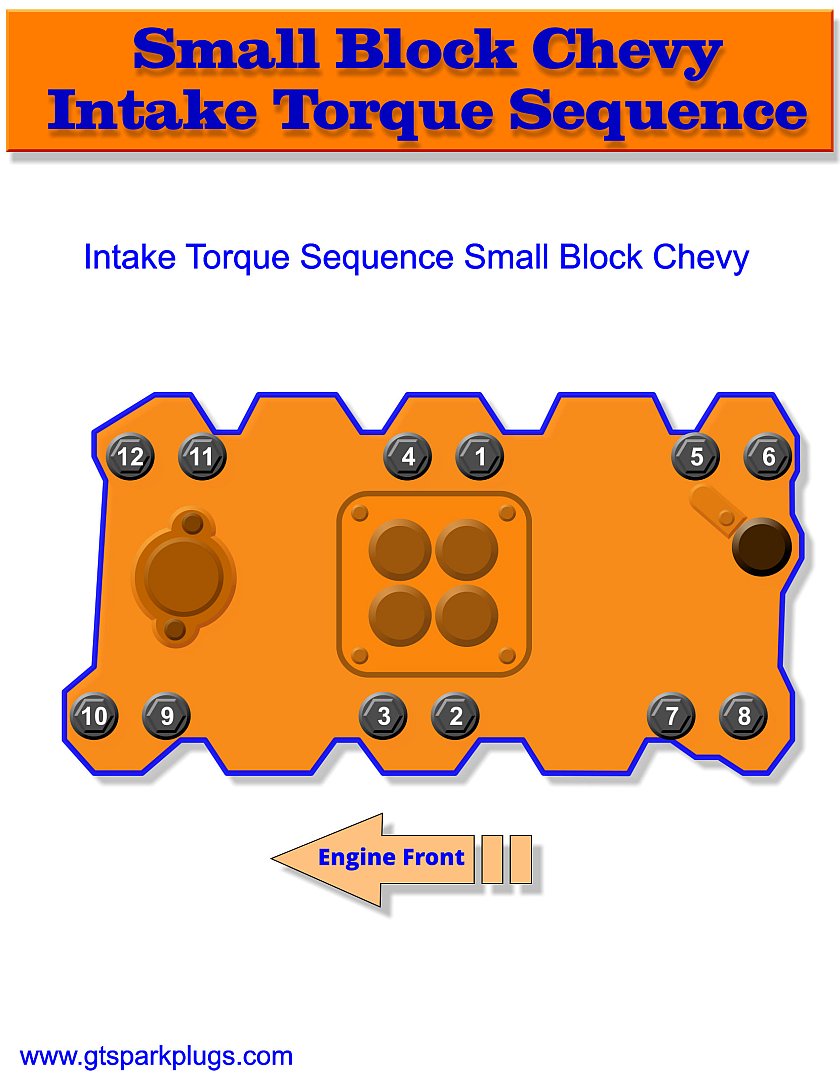Small Block Chevrolet Intake Torque Sequence
Putting on or replacing your Small Block's Intake manifold? Make sure you follow the manufactures instructions for
the proper procedures and torque specs if they have specific values as many do. You will need the usual things for
the installation, including the intake gaskets, end seals if you desire to use them, possibly thermostat housing
gasket and any other small parts along the way. The Small Block Chevy manifolds from the early 280, 302, 307,
327, 350 and 400 motors are pretty easy to change, they are not too heavy even in cast iron. This should also apply
to motors like later model LT1's and such, but NOT LSX series motors.
Don't forget the gasket sealer(s) torque wrench and this page. My preferences for gasket sealers on the race cars
end seals. It's also a good idea to coat bolts that enter the water jacket with some Permatex or similar bolt sealer.
This is an easy job, just take your time and make sure parts are clean.
Small Block Chevy Intake Manifold Bolt Torque Specifications
25 Ft/Lbs
Make sure you follow the sequence in a couple of steps, worry about this more on old and aluminum manifolds.
Cast Iron is much more forgiving if you are unfortunate to have to use a boat anchor of an intake.
Some Common Intake Manifold Installation Tips
If you have an old used manifold, before installing it, check for cracks, leaks and the threads in the thermostat
housing (often a problem area) and the threads in the bolt for the distributor clamp. You don't want to find out you
have to toss in a Helicoil or other insert while it's on the car. For the T-Stat housing and Distributor hold downs it's
nice to use studs.
Test fit your manifold with gaskets (no sealer). Make sure it looks like it will align. Milling heads and decking blocks
can make things not align properly and cause leaks.
Use good sealers, do not use silicon around intake ports unless the sealer explicitly mentions intake manifolds.
Some silicon sealers may be gas resistant but that's not enough so I just them for water ports. Some folks like to
use the end seals, I typically toss them and use a bead of silicon on the front and rear seals of the manifold. Do it in
the way you are most comfortable with. If tossing the end seals make sure things are totally clean an oil free.
Last thing is to be careful of the bolts near the water jackets on OLD manifolds. Sometimes these are prone to
cracking especially on some of the corroded aluminum and stock aluminum intakes. If you see lots of rust or lots of
eroded aluminum in the water area just go slow when tightening bolts and always run a tap in any suspect threads.
Another area that can be problematic is thermostat housing bolts on old iron manifolds due to rust. As said many
times, any bolt hole should be clean and if in doubt run a tap through it to make sure the threads are clean and in
good shape. A good heavy paint scraper is also your friend!

